11,000-year-old Natufian stone sculpture, which shows an entwined androgynous couple caught in the act, was discovered in the Judean Desert in the 1930s
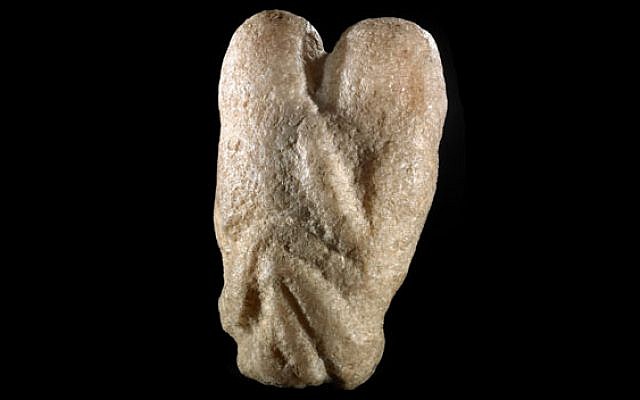
The first artistic depiction of sexual intercourse dates from 11,000 years ago and was uncovered in the 1930s in a cave near Bethlehem. The small sculpture, part of the British Museum collection, will go on a road trip across England this September as part of a four-venue traveling show, “Desire, Love Identity: Exploring LGBTQ Histories.”
The exhibit is made up of artifacts taken from the British Museum in London which have overt, or even subtle LGBTQ connections, such as this androgynous sculpture. The exhibit will appear in Oxford, Nottingham, Bolton and Norwich.
The ancient sculpture depicts two faceless, genderless individuals caught in the act. According to the British Museum website, “The arms of one [individual] hug the shoulders of the other and its knees are bent up underneath those of the slightly smaller figure. The image is also phallic.”
It was chiseled out of a white calcite cobble with a sharp rock during the Mesolithic period by a cave-dwelling people called the Natufians.
Depending upon which way the small sculpture is held, viewers say it can look like a phallus, scrotum sack, female genitalia, and, of course, the two lovers. Diminutive, the 10 cm X 6 cm (4″ x 2.4″) stone sculpture would fit in most hands and weighs a mere 300 grams.
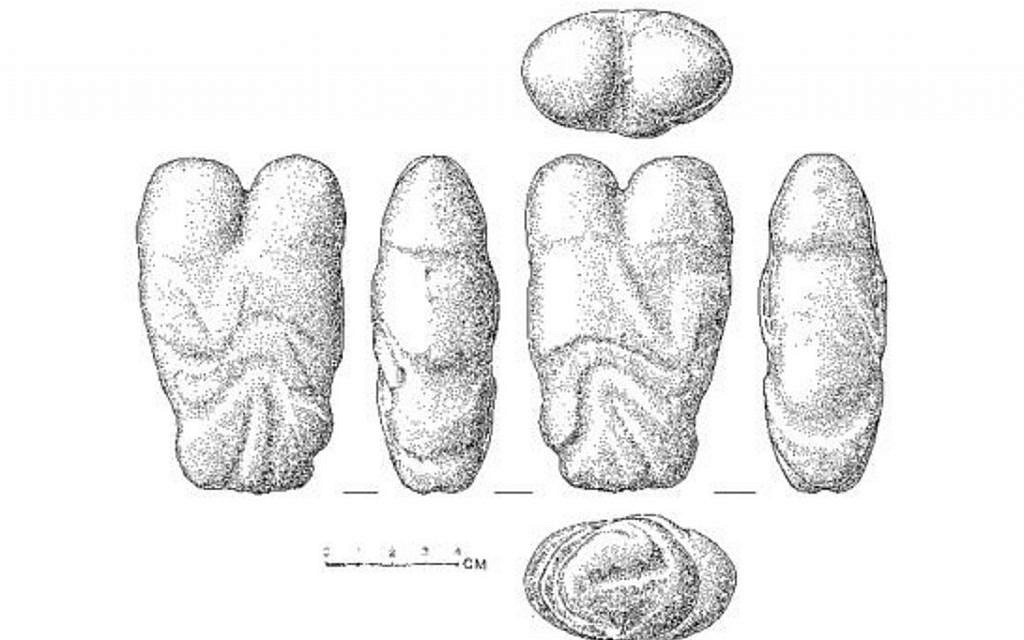
It was acquired in 1933 by a French consul to Jerusalem named René Neuville. A prehistorian by training, Neuville purchased it from the French Fathers at Bethlehem after its identification as prehistoric by French archaeologist l’abbe Henri Breuil, according to the British Museum.
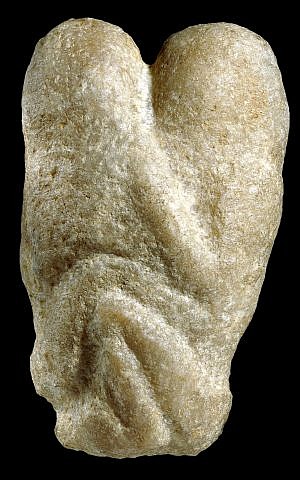
At Neuville’s insistence, so the story goes, the Bedouin antiquities looter who found the object was tracked down and he showed Neuville the cave where it had been discovered. The stone, today called the Ain Sakhri Lovers, takes its name from this Judean Desert cave.
Neuville later excavated the Ain Sakhri cave and found it to be a Natufian dwelling from circa 11,000 years ago. After Neuville’s death, the erotic sculpture was purchased by the British Museum at auction in 1958.
The Natufians are considered among the first civilizations to domesticate crops, livestock, and dogs. Perhaps because of their relative food security, it is thought, they had leisure time to create art, arguably for religious purposes.
According to a 2017 National Geographic interview with Nicholas Blincoe, author of “Bethlehem: Biography of a Town,” the Natufians “were nomads who found that if they stayed in one spot, they could have everything they needed. In the springtime, when the lambs are born, there’s grass for about two weeks, so they can feed their sheep. In the hills they can grow almonds, which were the first trees to be cultivated. Then, olive trees. This lifestyle gave them enough free time to sit down and start thinking about sex — and carving some sculptures.”
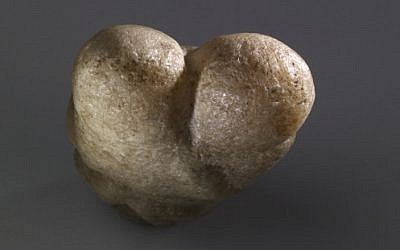
According to the museum, “Although unique in showing a couple, simple phallic carvings are known from other Natufian sites.”
There is nothing overt to connect the sculpture with homosexual sex. And, on the other hand, there is nothing to rule it out as well.
In a press release this week, British Museum director Hartwig Fischer said about the upcoming LGBTQ tour that the London landmark “has always been open to everyone, presenting all cultures to visitors from around the world.
“It is hugely important that institutions like ours meaningfully present LGBTQ art and history, so I am delighted that we are offering these new tours that explore the LGBTQ experiences found throughout our collection, both ancient and modern,” he said.
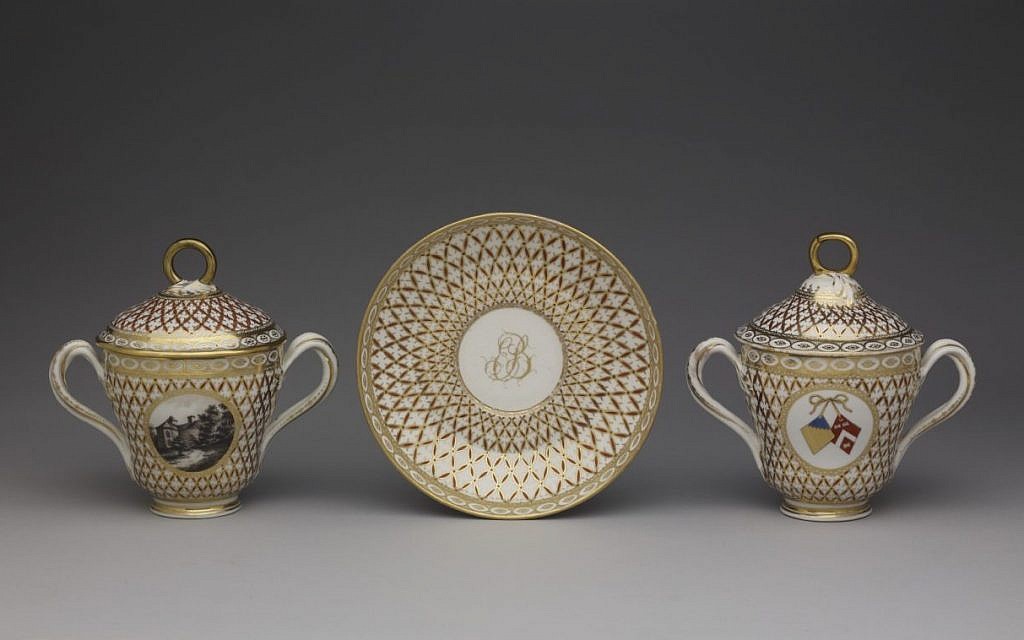
The traveling tour will also include the silver Warren cup (circa 1st century CE depiction of men in coitus with men), a bust of Hadrian’s lover Antinous, as well as a set of porcelain cups belonging to an 18th century female couple, nicknamed the “two most celebrated virgins in Europe.”
In 2010, the Ain Sakhri Lovers was featured by BBC Radio 4 in its massive series, “A History of the World in 100 Objects.” The 100-part, 15-minutes a pop radio series was written and presented by former British Museum director Neil MacGregor. During the short program, museum curator Jill Cook emphasized the timeless quality of the piece.
“Whether we see the Ain Sakhri lovers as a piece of erotica, a tender expression of homosexual or heterosexual love, a symbol of fertility, masculinity or a metaphor for creation, depends on our own background and beliefs,” said Cook.
As reported by The Times of Israel
